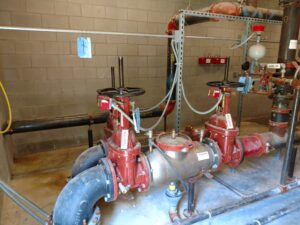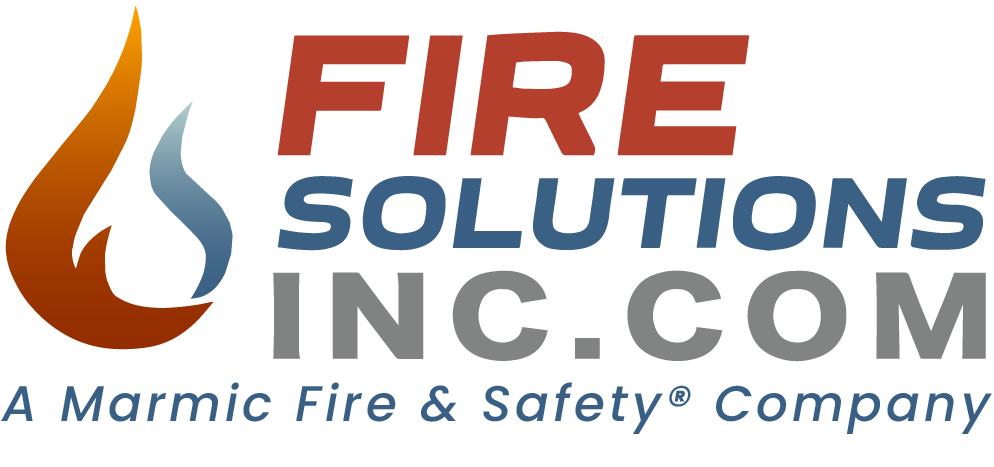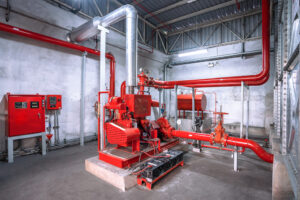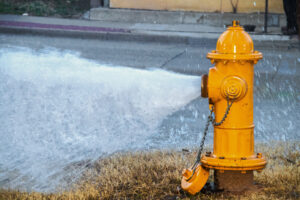Services
The Total, Comprehensive – FIRE SOLUTION
Inspect. Service. Install & Design.
That’s our mission in a nutshell. First, we inspect the area to determine a proper course of action, creating a system that works for
complete fire protection including fire extinguisher service Richmond and more. Next, we provide the service to actually install the job, consult on the complete solution for all products including a sprinkler system, alarm system, basic fire extinguishers and more. Finally, we install the entire system for you and design it so that it fits within the function and design of your location. The thorough and precise job we deliver at Fire Solutions Inc. is unparalleled to any other fire system or fire protection company and fire extinguisher service Richmond provider in the area.
Our Inspection Services Include, but are not limited to:
- Fire Sprinkler
- Fire Extinguisher- Inspection, Recharge, Hydro Testing, New & Maintenance
- Fire Alarm
- Halon/ FM200/ NOVEC1230 Clean Agent Systems
- Carbon Dioxide Systems (High & Low-pressure CO2)
- Restaurant Fire System (Amerex, PyroChem, RangeGuard, Kidde, Ansul, Buckeye, Protex)
- Emergency/Exit Lights
- Fire Pumps
- Backflow
- Paint Booth Fire Systems
- Vehicle Fire Systems
- Gas Detection Systems
What is complete Fire Solutions?
* Fire Solutions is a GSA Contract Holder #GS21F037AA
* Operating a DOT Certified Test Facility
* NICET Certified Technicians
* Certified Fire Protection Specialist
* Fire Solutions is an Elite Distributor for GWFCI (Gamewell-FCI)
* Fire Solutions is a SWAM Certified Micro Business Corporation (#001124)
* Fire Solutions is a VA Class “A” Contractor with classifications in FAS – FSP – SPR
* Fire Solutions is DCJS (Department of Criminal Justice Services) #11-3452
* Fire Solutions Federal CAGE Code 1ULH0
* Consistently Maintains an Experience Modifier Rate of less than 0.84 or better
* Highest Rated and Most Reviewed Fire Extinguisher Service Richmond Provider
How Do You Know Fire Solutions Delivers Complete, Comprehensive, and Compliant Fire Solutions?
Check Out Your City Links!
LOCALITY PERMIT INFORMATION LINKS
Henrico County Permit Information
Chesterfield County Permit Information
Hanover County Permit Information
City of Richmond Permit Information
City of Petersburg Permit Information
James City County Permit Information
City of Williamburg Permit Information
City of Charlottesville Permit Information
Newport News Permit Information
Hampton Permit Information
Powhatan County Permit Information
Fredericksburg Permit Information
**Learn more about your fire extinguisher service Richmond fire codes and laws at
https://www.richmondgov.com/
Fire Sprinkler Systems, Fire Extinguishers, and Fire Alarms

Not only do we determine the right systems for you, but we help determine where the installation should go, at what capacity the design can blend into the current building, and how much of a budget you allocated for the project.
That is why our team is trained and certified to help make sure that we cover every end when it comes to fire-related commercial codes and compliance.
Everything You Need to Know About a Water Filled Pipe
There are many things you may not realize about your business in terms of keeping your infrastructure up to city code. Water filled pipe that runs through an unconditioned space in a building(not heated) needs to have a way to ensure that the piping will not fall below freezing temperatures. Per NFPA (National Fire Protection Association) They need to be maintained at temperatures above forty degrees so that the water inside the pipe is not allowed to freeze and expand to the point where the frozen water causes the pipe to break. Water that does not move tends to freeze at a much higher rate than other types of plumbing and HVAC water systems carrying water because the other systems have moving water in them which is harder to freeze because flowing water is basically potential energy constantly being converted into heat energy that resists freezing. In order for flowing water to freeze it would have to be extraordinarily cold, or remain cold for an extended period of time, or even a combination of the two.
Referring to information from the NFPA 13 Handbook from the section
8.16.4.1 Protection of Piping Against Freezing:
(Explanatory material from the handbook):
“Tenting the insulation over the pipe can be extremely effective as long as the insulation is not installed between the heated space and the pipe and sufficient insulation is kept over the pipe to trap the heat coming up from below. Other trades working in the building need to understand the importance of not disturbing the insulation once it has been laid down.”
8.16.4.1.1* Where any portion of a system is subject to freezing and the temperatures cannot be reliably maintained at or above 40°F
(4°C), the system shall be installed as a dry pipe or pre-action system.
A.8.16.4.1.1 Water-filled piping can be run in spaces above a heated room, such as attics, even if the space above the room is not heated itself. Insulation can be located above the pipe to trap the heat from below and prevent the pipe from freezing. It is important not to bury the piping in the insulation because if too much insulation ends up between the pipe and the heated space, the insulation will prevent the heat from getting to the pipe. This method of protecting the pipe is acceptable to this standard.
Since per NFPA 13 “This method of protecting the pipe is acceptable to this standard”, tenting fire sprinkler pipe with insulation is a popular method which satisfies this requirement.
There are various methods to tent pipe in order to prevent freezing of pipe:
1. Use poly over the pipe to prevent any insulation from getting between the bottom of the pipe and the heat envelope, then use blown-in insulation or batt to create R-38 over the pipe 2. Use batt insulation and run R-19 along both sides of the pipe parallel then run
R-19 perpendicular to the pipe creating an R-38 barrier around the pipe with the batt insulation and minimizing any leakage areas 3.
Use the paper side of the batt insulation and staple to joist creating a “tenting over the pipe with batt insulation then lay another layer of batt or have sufficient blown-in insulation to create R-38 total including the batt that is being used as tenting over that layer of Batt insulation
From time to time there may be some misunderstanding on the interpretation of the NFPA 13 8.16.4.1 Protection of Piping Against Freezing requirements. Since the pipe is being tented with insulation. The requirement for 8.16.4.1.5:
8.16.4.1.5 Water-filled piping shall be permitted to be installed in areas where the temperature is less than 40°F (4°C) when heat loss calculations performed by a professional engineer verify that the system will not freeze.
Since this section refers to when piping, and not the typical fire extinguisher service Richmond discussions when being installed in the heat envelope for the floor below with the insulation installed above the piping, the requirement for 8.16.4.1.5 should not be required unless it is intended to have the occupants who will be living in the below heat envelope endure temperatures below 40 degrees.
A few examples of when a water-filled pipe may run through an area that is unheated and would thus require heat loss calculations from a professional engineer may include a military installation where bays are being used to work on equipment and may have some heat but the entire space is not considered a “heated space”. It could be a bay area.
Our goal is to help educate you and clear up some of the questions, concerns, and comments that we have heard, and even continue to hear from clients from time to time on the issue. Please let us know if there are any questions regarding this or any other issue or concern, especially related to your fire extinguisher service Richmond needs and other fire safety concerns.


